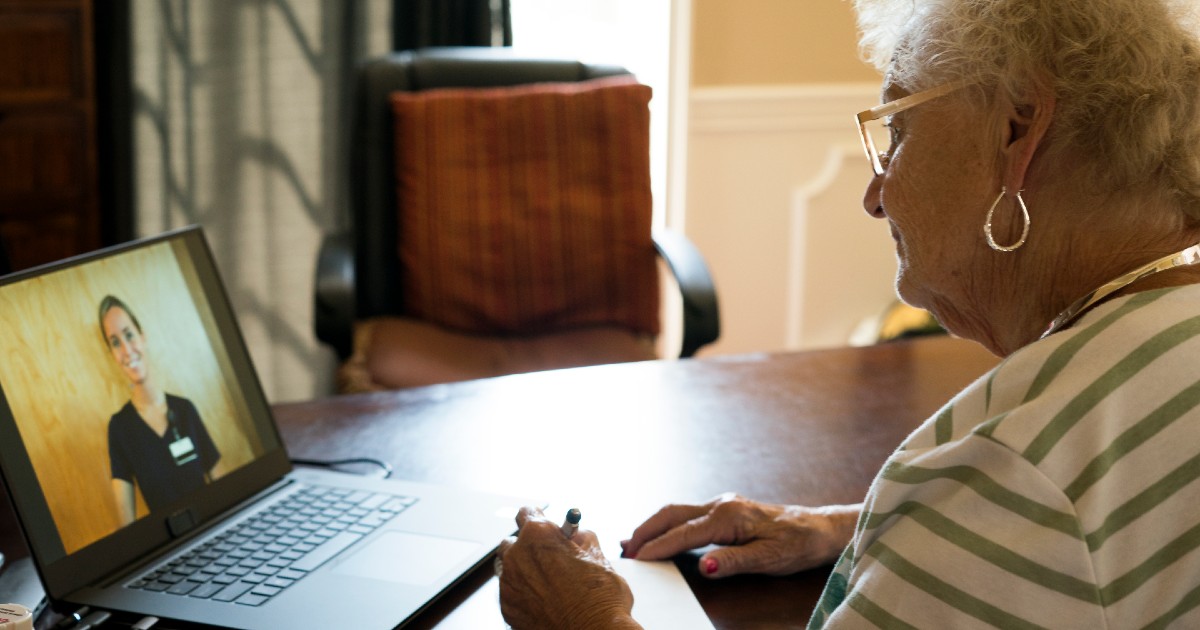
A study published in the Western Journal of Nursing Research found that patients using at-home monitoring systems for blood glucose and blood pressure levels received almost twice as many “nursing activities” as patients who received usual care.
In other words, relying on telehealth to manage Type 2 diabetes and hypertension could heighten nurse workloads.
At the same time, researchers noted that the increased communication rates could result in better health outcomes for patients.
“As a nurse, I am always thinking of new and innovative ways to use technology to help people manage their chronic conditions and live a more healthy, active lifestyle,” said Chelsea Howland, a doctoral student at the University of Missouri Sinclair School of Nursing, in a press statement.
“As telehealth continues to become more popular, it can be used to get health behavior intervention tools to the people who need them most, but we also need to keep in mind the strain it puts on nurses that are going above and beyond to make this possible,” continued Howland, the first author on the study.
WHY IT MATTERS
The study, which was first published this past year, examined electronic health record data from people with Type 2 diabetes and hypertension with in-home monitoring tools and from those receiving in-person care.
As Howland and her research team noted, patient self-management via in-home technologies can allow for more timely changes to care and collaborative goal-setting.
At the same time, the study reads, “When incorporating home-based technologies into primary care clinics, it is important to recognize the role of registered nurses in interpreting data, communicating with primary care providers, and implementing changes to patient care.”
“Nurses are integral to the management and analysis of home-based technologies and patient follow-up,” the study continued.
The study relied on EHR data from a fairly small number of patients: 36 who used in-home monitoring, and 38 who received what researchers deemed “usual care.”
Researchers found that patients in the in-home monitoring group on average received almost twice as many nursing activities than patients who received usual care.
Most of the activities for the in-home monitoring group, they found, included adding blood glucose data to the EHR, making medication adjustments, noting blood glucose and blood pressure levels as out of range and reminding patients to self-monitor and transmit blood glucose and blood pressure data.
The in-home monitoring group also had more communications, on average, than the patients who received usual care.
“It is integral to examine nursing activities and communication processes of nurses within a primary care clinic setting, to begin to develop a framework for understanding implications for nursing workload and workflow when in-home monitoring systems are incorporated into patient care,” read the study.
THE LARGER TREND
Although technology can undoubtedly be used to improve patient care, it can also contribute to clinician burnout – particularly if the tools aren’t user-friendly.
A recent study found that nurses gave EHR usability an F grade – and that poor usability is associated with nurse burnout.
“To design and implement technology that better meets nurses’ needs, it will be necessary to include input from and amplify the voice of nurses to better understand how technology can better meet their needs,” read the study.
ON THE RECORD
“We can’t expect nurses to use these tools successfully without better understanding the impact it will have on their workload,” said Howland.
“Going forward, this research can provide the framework for quantifying how much time nurses spend on these telehealth tasks, especially with the current nationwide nursing shortage. If the nurses are completing twice as many tasks via telehealth, should they be responsible for half as many patients?”
Kat Jercich is senior editor of Healthcare IT News.
Twitter: @kjercich
Email: kjercich@himss.org
Healthcare IT News is a HIMSS Media publication.
